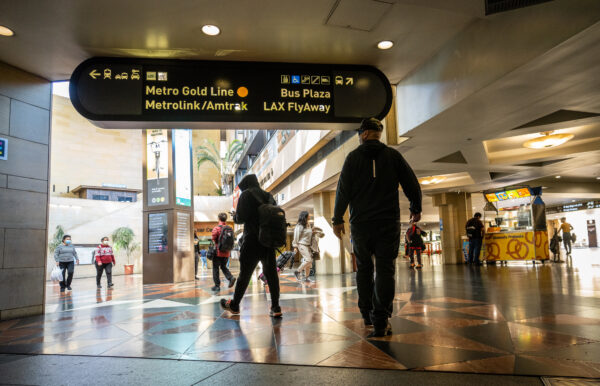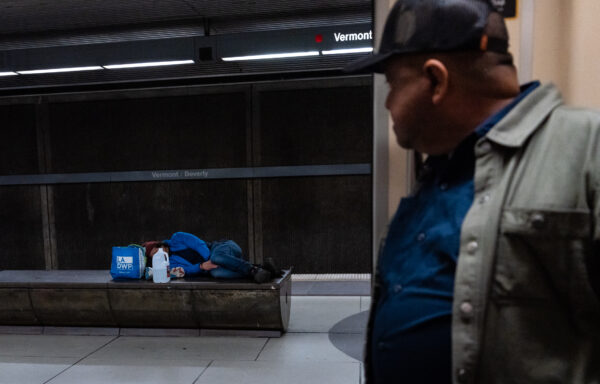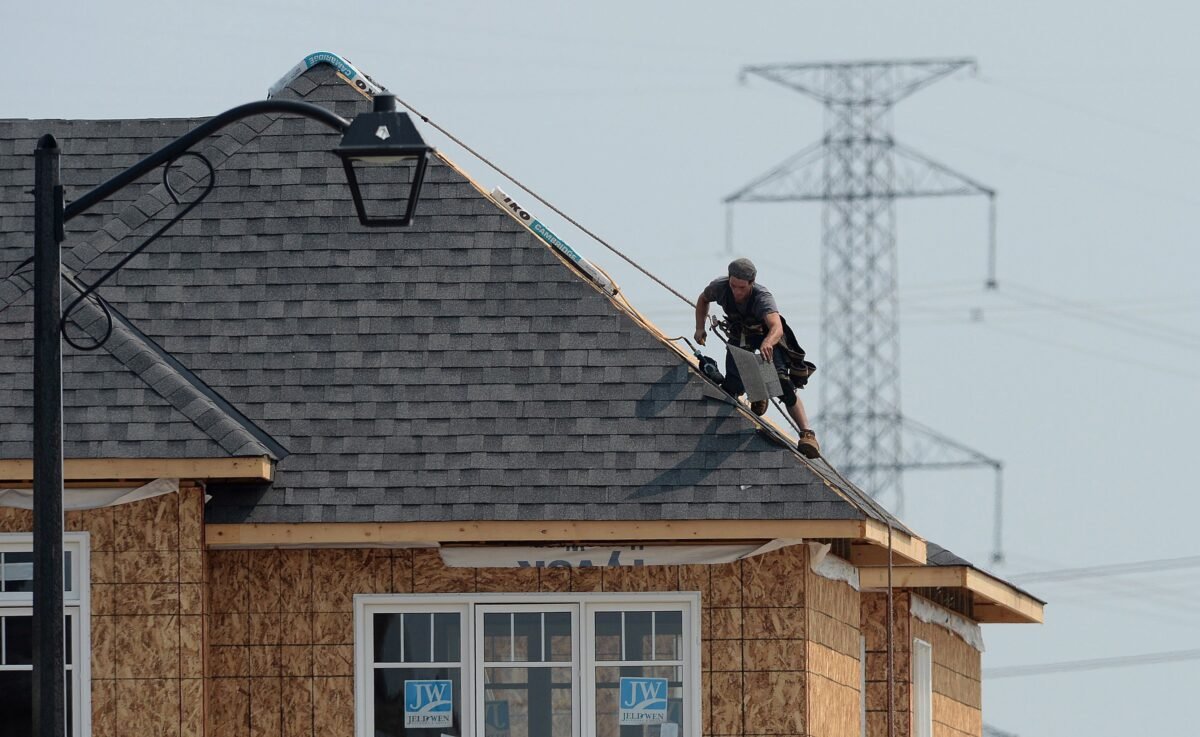California Lawmakers Propose $1.1 Billion Transit Bailout Amid Declining Ridership, Rising Crime
With some transit agencies in the state pleading for assistance facing significant budget deficits due to low ridership, California lawmakers reached a tentative agreement on June 11 to make some funding available, though not as much as requested.
The handshake deal was made in the Legislature over the weekend and now awaits the approval of Gov. Gavin Newsom, whose signature is required to make the proposal law.
“As the governor has said, we recognize the important role transit plays in the state and have welcomed conversations with the Legislature on the subject,” Daniel Lopez, deputy communications director for Newsom’s office, told The Epoch Times by email on June 13. “Although the state faces a multibillion-dollar budget deficit, the governor’s team is steadily working with the Legislature and remains optimistic that a deal can be reached to provide important support for statewide public transit systems and their workers.”
Statewide, transit agencies are seeking more than $5 billion in bailouts as a result of substantial budgetary shortfalls following plummeting revenues and ridership.

The deal proposed by lawmakers would reinstate $2 billion in funding cut by Newsom in May for the proposed upcoming 2023–24 fiscal year budget and would allocate $1.1 billion from so-called cap-and-trade revenues—which are funds collected from regulated facilities that exceed carbon emission limits—to assist the struggling agencies.
“We are pleased to see negotiations continue, and the Governor remains committed to the support of public transit throughout California,” Lopez said. “Accountability will be a critical part of any deal, and local transportation officials must thoroughly assess their operations and take steps to reform and stabilize their programs in the long run while continuing to meet the needs of their ridership in the near-term.”
The proposal covers transit agencies across the state, with the largest in the San Francisco Bay Area, which is in dire need of assistance.
Ridership Decline Due to Pandemic, Hybrid Work
A panel discussion on June 13 in Walnut Creek—about 15 miles east of Oakland—hosted by the Libertarian Party of Contra Costa County, sought to address the steps needed to restore the Bay Area Rapid Transit (BART) to solvency.
While ridership peaked prior to the pandemic and had been on a gradual decline since 2016, COVID restrictions imposed by state and local governments in 2020 were followed by a 40 percent decline by March 16 and a 94 percent decline by April of the same year, according to the agency.
Hybrid work with fewer commuters traveling to office jobs has prevented returning to historic norms, with ridership expected to be approximately 41 percent of pre-pandemic totals for June 2023, according to Debora Allen, a BART board of director.
“These are paid numbers,” Allen said. “And we all know some people don’t pay.”
Fare Evaders Responsible for 90 Percent of Crimes on System
Audience members during the Libertarian Party panel gasped when Allen presented statistics demonstrating that more than 90 percent of all crimes committed on the system were done so by those who don’t pay.
Fare enforcement has been a priority for Allen since joining the board seven years ago. She has spearheaded projects to install gates that prevent jumping over turnstiles, the typical tactic used by fare evaders.
Some on the board are opposed to enforcement for fare evasion, with repeated attempts by some to study the phenomenon and measure its impact. Such has been met with resistance from fellow board members, and no such studies have been undertaken—though estimates range from $25 million to $50 million loss a year from fare evasion, according to Allen.
A third fare evasion offense is currently a misdemeanor carrying potential penalties of a $400 fine or 90 days in county jail—or both—though enforcement is variable.
Assembly Bill 819, currently being considered by the Senate after passing its house of origin, would eliminate misdemeanor and jail time consequences, and critics say more fares will be evaded if the bill becomes law.
Getting riders to return is also an issue of public safety, with the matter ranking at the top of every rider’s satisfaction survey conducted over the last three years by the agency, according to Allen.

Instances of crime have plagued the system, and open drug use, violent crime, and aggressive panhandling are contributing to the decline in ridership, as many commuters report not feeling safe.
“[The board] ruined the reputation on the public safety side,” Allen told The Epoch Times following the discussion. “And it’s going to take a lot to bring that back.”
Plummeting revenues have led to a projected $93 million budget deficit for BART for the 2025 fiscal year and more than $300 million expected in 2026, due to increased capital expenditures including train replacements, according to Allen.
Regarding cutting operating costs, she told the audience that the BART board has not prioritized the need to do so, with six directors voting twice in one meeting against reducing expenditures.
BART Needs to Charge $46 Per Ride to Break Even: Report
During a presentation to the assembled audience, Marc Joffe—public policy analyst at the Cato Institute, a public policy think tank based in Washington, D.C.—illustrated the disparity between projected BART revenues and expenses for fiscal year 2024–25, with revenue per ride anticipated at $4, while costs after calculating operational and capital expenses and debt could equate to more than $46 per ride, though he noted that projections are difficult to pinpoint due to the variability of expenses.
Faced with such a financial dilemma, Joffe laid out strategies for BART to reduce spending and improve operational efficiencies.
“Money should be spent on making tracks driverless,” he told the audience.
BART was originally designed to be automated, but the technology is antiquated, according to Joffe.
The system he envisions consists of short, one or two-car trains running every five minutes, with high-quality surveillance cameras and police monitoring a live feed, so that if something happens, officials can intervene at the next station.
Newer transit systems in other countries all operate autonomously, with Canada, France, and Japan among the many nations taking advantage of new technologies.

Paying for train operators is most of BART’s expenditures, and limiting or eliminating them has been stalled by labor unions seeking to protect jobs for their members, according to experts.
Joffe said he sees a future where both sides can achieve their goals.
“There’s a lot of union resistance, but it’s possible to keep operator trains and have driverless trains in between, so nobody loses their jobs,” he told The Epoch Times.
“Eventually these people will retire, and then you have a fully automated system.”
In addition to improving automation, spending by the agency should be curtailed—specifically $30 million a year in retirement benefits, a $9.3 billion Silicon Valley extension, and $200 million to plan a second tunnel between San Francisco and Oakland—in what are described as unaffordable and unnecessary expenditures, according to Joffe.
“It’s superfluous when BART has multi-hundred-million-dollar deficits,” Joffe said during the discussion. “These are luxuries BART can no longer afford and that need to be on the chopping block.”
With $1.1 billion in proposed funding up in the air awaiting the governor’s approval, some say it’s not enough to solve the problem, as the money will be split by dozens of agencies tasked with cutting costs to make ends meet.
“It’s clearly not enough without dialing back,” Allen—the BART board of director—told The Epoch Times. “To fill that deficit, you need to focus on revenue that exceeds the cost of getting the riders back.”




